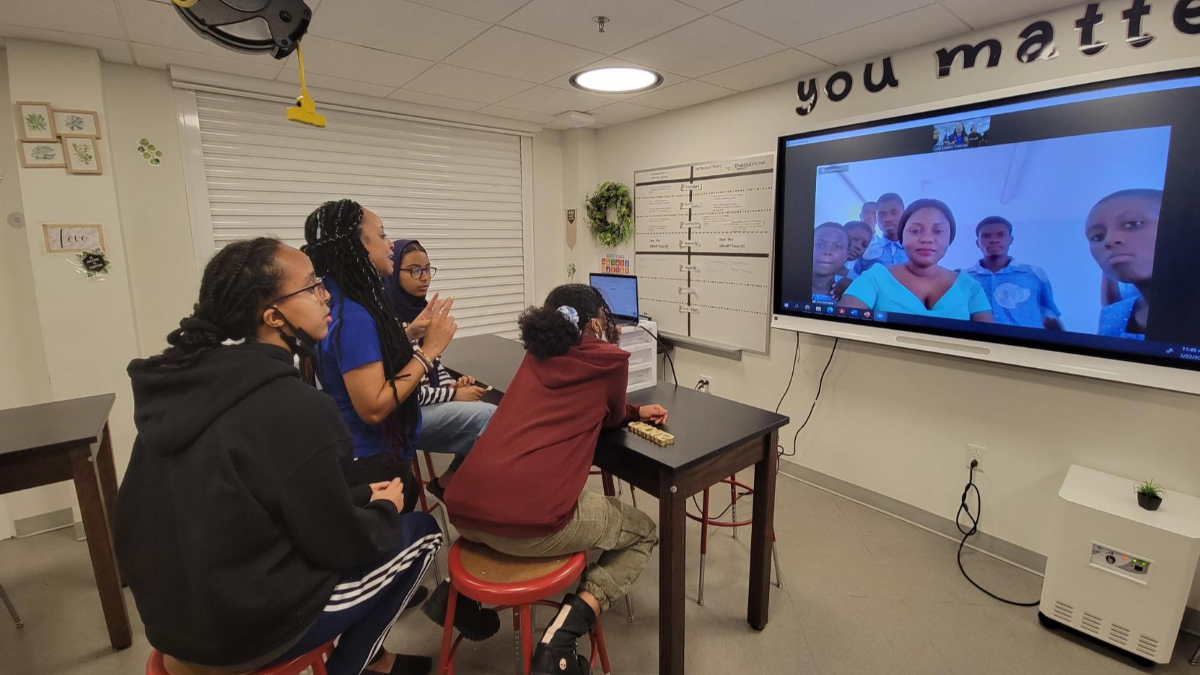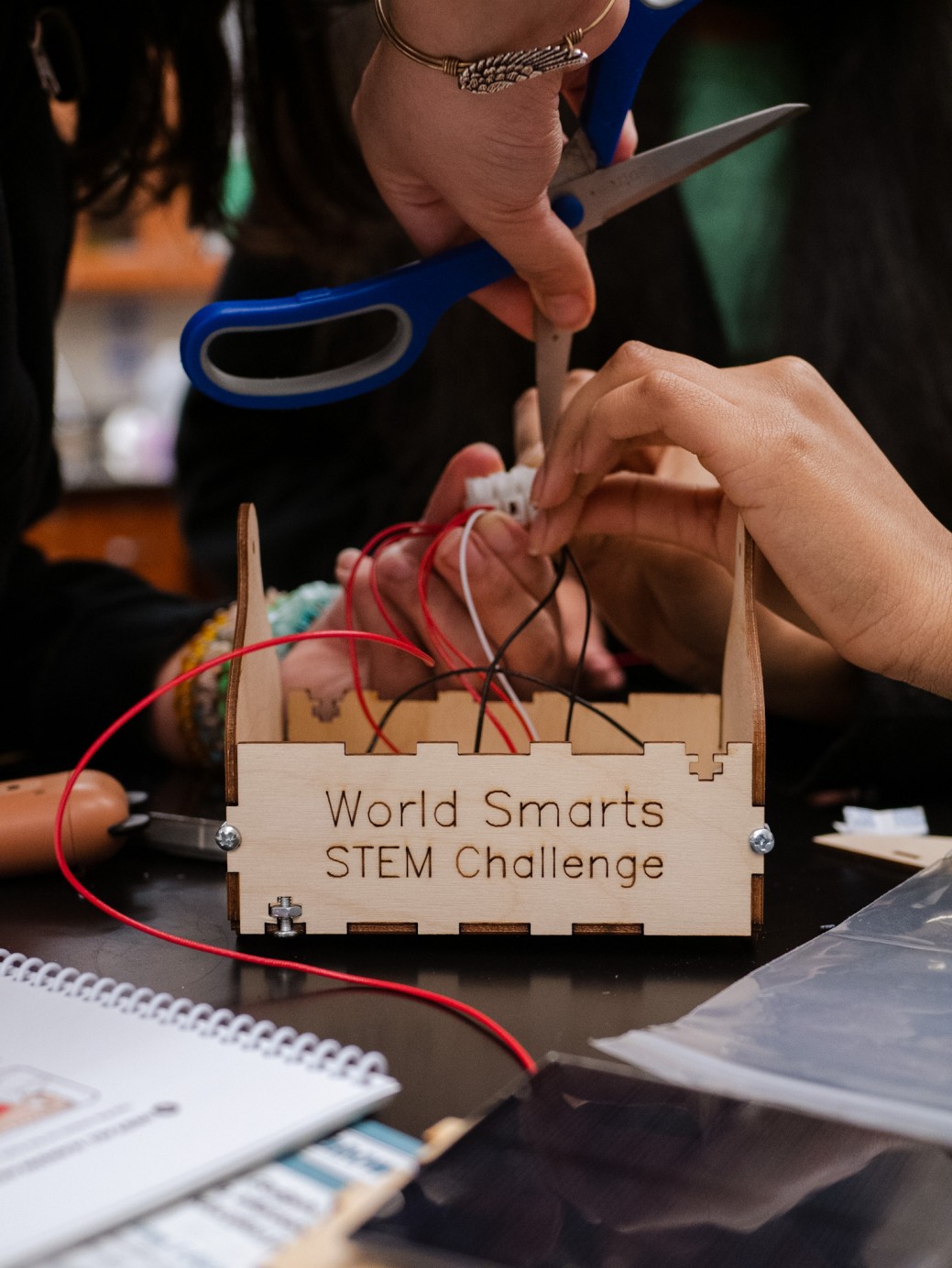Fostering STEM learning and global competence: Key insights and resources for virtual exchange implementers
By: Amaris Mohammed
February 28, 2025

In an increasingly globalized world, STEM (Science, Technology, Engineering, and Mathematics) education must go beyond technical skills to prepare students for cross-cultural collaboration and real-world problem-solving. The World Smarts STEM Challenge, a virtual exchange program funded by the National Science Foundation, connects students from the United States and Ghana to work on solutions to global challenges using design thinking. Through this initiative, students not only strengthen their STEM and professional skills but also develop global competence, preparing them for the modern workforce. This piece explores key insights from the program’s research and evaluation, highlighting its impact on students and educators, and introduces new resources for those looking to implement similar approaches in their classrooms.
Established in 2016, the World Smarts STEM Challenge program is part of the Innovative Technology Experiences for Students and Teachers (ITEST) applied research program. Through a partnership between IREX, North Carolina State University (NCSU), and Catalyst Consulting Group, the virtual exchange pairs middle and high school students on binational teams to address challenges in their communities aligned with the United Nations Sustainable Development Goals using a human-centered design framework.
From 2016 to 2023, the program successfully implemented a pilot and two cohorts, engaging 610 students and 110 educators from over 50 public and private schools across eight regions in Ghana and the Washington, D.C. metropolitan area.
To assess the program’s impact, IREX and NC State University collected and analyzed data from pre-test and post-test surveys and qualitative interviews administered to the 2022 and 2023 fall cohorts. Catalyst Consulting Group evaluated the program through surveys, focus groups, site visits, and ongoing reflections from program implementation.
Key findings: What did we learn?
The findings show that the program accomplished the following:
- Increased awareness of global issues – After engaging in interactive discussions on the Sustainable Development Goals and collaborative problem-based learning projects focused on global issues with peers in the U.S. and Ghana, youth reported significant improvements in the areas of global mindedness and engagement with others. Specifically, on a 4-point scale, youth’s agreement with statements like “Looking after the global environment is important to me”, increased from 3.34 to a mean score of 3.49. Incorporating similar activities into programs can foster youth’s global citizenship and understanding that one’s responsibility and humanity transcends borders.
- Enhanced digital and cross-cultural competencies – By utilizing digital learning platforms, students developed proficiency in leveraging technology to create and share information, analyze local and global issues, understand diverse perspectives, contribute to collective well-being, and engage in meaningful cross-cultural exchanges. By integrating technology-driven collaborative tasks and projects, students are encouraged to explore and discuss global and local issues.
- Developed key STEM and professional skills – By identifying a problem and developing and prototyping a solution, students strengthened skills such as collaboration, technology use, communication, empathy, emotional intelligence, time management, confidence, critical thinking, problem-solving, organization, creativity, and flexibility.
- Strengthened educator capabilities – Through professional development, training, and coaching from IREX, teachers gained confidence in facilitating virtual project-based learning, integrating human-centered design for STEM solutions, and leading cross-cultural projects.
- Expanded access to global learning – The program enabled traditionally underserved students in public secondary schools in Ghana and the U.S. to engage in STEM across national and cultural lines, solving local manifestations of global problems. This provided valuable international education experiences, fostering cross-cultural collaboration and empowering students underrepresented in STEM fields to become problem-solvers with a global perspective. This model opens up STEM opportunities for students who might otherwise lack access, and it can be replicated to provide similar opportunities to other underserved communities worldwide.
- Prepared students for the modern workforce – The challenge mirrored real-world workplace collaboration, equipping students with skills for global teamwork and professional readiness. These competencies are crucial in today’s interconnected job market, where employers increasingly value communication and collaborative skills.
- Offered a scalable, cost-effective model – The program provided a low-cost, flexible method for integrating global learning into secondary education curricula, requiring minimal resources and time commitment. This approach makes it easier for other schools—especially those with limited budgets—to replicate, broadening access to global education across various regions.
- Fostered long-term educator collaboration – Teachers continued engaging in global education initiatives beyond the program, establishing meaningful, sustained professional relationships. This ongoing collaboration allows educators to exchange best practices and stay informed about innovative global teaching strategies, benefiting their students and communities long-term.
Looking ahead: Expanding the World Smarts Model
The World Smarts program has proven to be a scalable, teacher-led model for virtual exchange. In addition to evaluating previous cohorts, the evaluation team conducted a literature review and needs assessment to aid in the development of new resources to support educators interested in implementing the program independent of a cohort supported by IREX.

Learn how to implement the new World Smarts: Human Centered Design Modules.